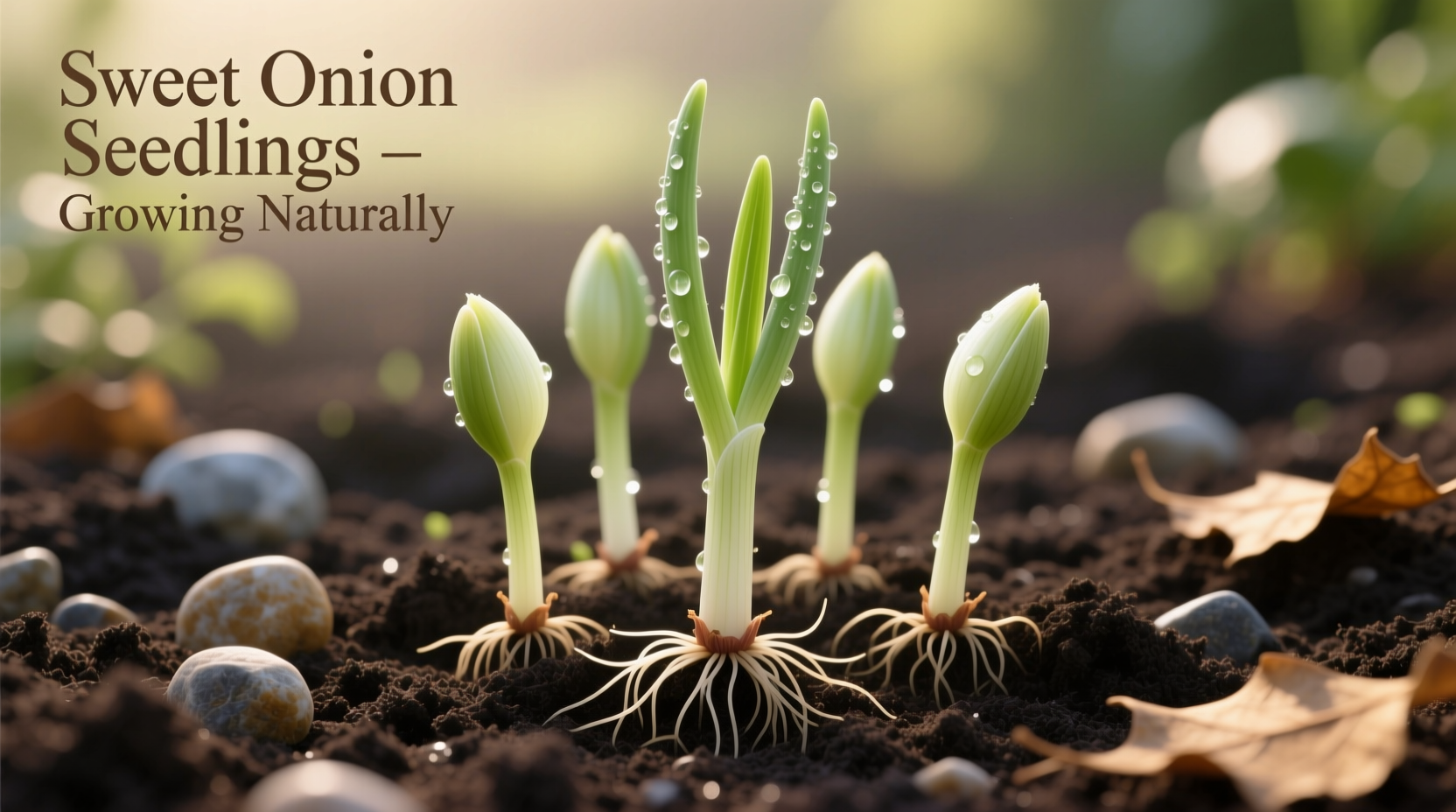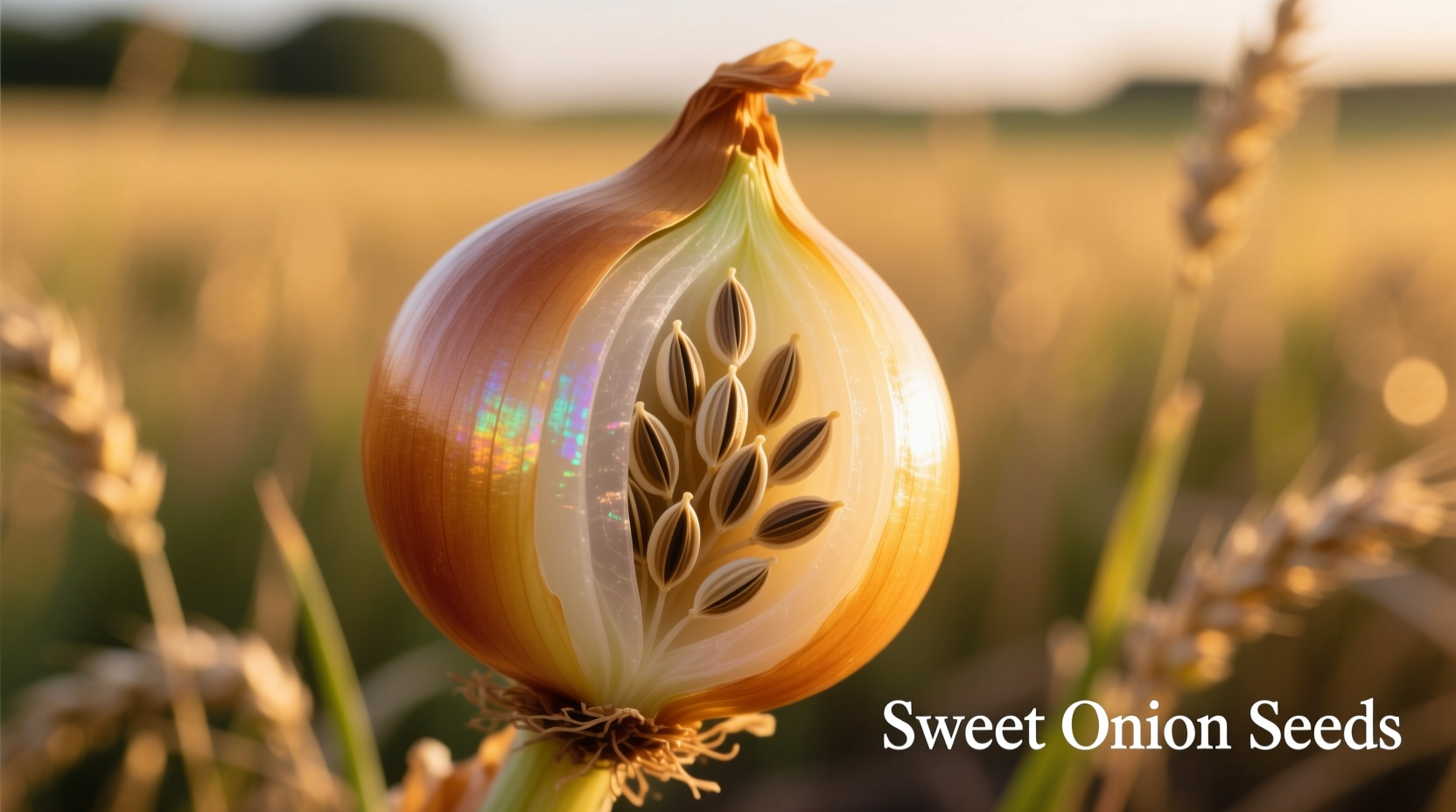Starting sweet onions from seed gives you access to superior varieties that store better and taste sweeter than store-bought options. This complete guide reveals optimal planting times, soil preparation techniques, and harvesting methods to grow perfect sweet onions in your garden.
Have you ever wondered why homegrown sweet onions taste noticeably sweeter than supermarket varieties? The secret starts with selecting the right seeds and understanding their specific growing requirements. Unlike sets or transplants, growing sweet onions from seed allows you to choose from dozens of superior varieties that deliver exceptional flavor and storage capabilities.
Why Grow Sweet Onions From Seed Instead of Sets?
While onion sets offer convenience, they come with significant limitations for sweet onion enthusiasts. Sets often produce smaller bulbs with inconsistent sweetness and limited variety options. When you start with sweet onion seeds for home garden cultivation, you gain access to specialty varieties like Vidalia, Walla Walla, and Texas Sweet that simply aren't available as sets.
According to the University of Minnesota Extension, seeds provide better disease resistance and allow for precise timing control—critical factors for developing the characteristic sweetness in long-day and intermediate-day varieties.
Sweet Onion Varieties Compared: Finding Your Perfect Match
| Variety | Days to Maturity | Day Length | Sweetness Level | Best Regions |
|---|---|---|---|---|
| Vidalia 58 | 110-120 | Intermediate | ★★★★★ | Zone 7-9 |
| Walla Walla | 100-110 | Long-day | ★★★★☆ | Zone 6-8 |
| Texas Sweet | 95-105 | Short-day | ★★★★☆ | Zone 8-10 |
| Red Burger | 100-110 | Intermediate | ★★★☆☆ | All zones |
This sweet onion seed variety comparison reveals why matching your selection to your climate zone matters. The USDA Plant Hardiness Zone Map confirms that short-day varieties like Texas Sweet thrive in southern regions (zones 8-10), while long-day types such as Walla Walla perform best in northern climates (zones 6-8). Intermediate varieties offer the most flexibility across multiple zones.

Optimal Planting Timeline for Maximum Sweetness
Timing determines whether your sweet onion seeds for beginners develop proper bulb size and sugar content. Follow this planting schedule based on your last frost date:
- 8-10 weeks before last frost: Start seeds indoors at 65-75°F soil temperature
- 4-6 weeks before last frost: Transplant seedlings outdoors (harden off first)
- When soil reaches 50°F: Direct sow seeds in warmer climates
- Mid-summer: Plant fall crop for overwintering in zones 7+
The Oregon State University Extension Service emphasizes that planting too early exposes seedlings to cold temperatures that trigger bolting—when onions prematurely flower and reduce bulb size. Their research shows that maintaining consistent soil moisture during the first 60 days of growth increases sugar content by up to 25%.
Soil Preparation: The Foundation of Sweet Flavor
Sweet onions demand specific soil conditions to develop their characteristic mild flavor. Before planting your sweet onion seeds in containers or garden beds, prepare your soil with these critical steps:
- Test soil pH (ideal range: 6.0-6.8) using a reliable kit
- Amend with 3-4 inches of compost to improve drainage
- Mix in 1 lb of bone meal per 100 square feet for phosphorus
- Create raised beds 4-6 inches high for better drainage
- Avoid fresh manure which can cause disease issues
According to Cornell University's Vegetable Growing Guides, sweet onions require higher sulfur levels than storage onions to develop their signature sweetness. However, excessive nitrogen promotes leaf growth at the expense of bulb development—aim for a balanced 10-10-10 fertilizer applied monthly.
Step-by-Step Planting Guide
Follow these precise steps for successful sweet onion seed starting techniques:
Indoor Seed Starting
- Fill seed trays with sterile seed starting mix
- Plant 2-3 seeds ¼ inch deep per cell
- Maintain consistent moisture (not soggy)
- Provide 14-16 hours of light daily
- Thin to strongest seedling when 2 inches tall
Transplanting to Garden
- Harden off seedlings over 7 days
- Space plants 4-6 inches apart in rows 12-18 inches apart
- Plant at same depth as in containers
- Water thoroughly after transplanting
- Apply 2-inch mulch layer to conserve moisture
Essential Care for Sweeter Bulbs
Proper care during the growing season directly impacts your sweet onion harvest quality. Implement these practices:
- Watering: Maintain 1 inch of water weekly—irregular watering causes splitting
- Weeding: Hand-pull weeds carefully to avoid damaging shallow roots
- Fertilizing: Apply balanced fertilizer when tops reach 6 inches tall
- Pest control: Use row covers to prevent thrips damage
- Disease prevention: Rotate crops annually to avoid fungal issues
Research from the University of California Agriculture and Natural Resources shows that reducing water 2-3 weeks before harvest concentrates sugars in the bulbs, enhancing sweetness without compromising storage potential.
Harvesting and Curing for Maximum Flavor
Knowing when to harvest sweet onions makes all the difference in flavor development. Watch for these maturity signs:
- Neck softens and begins to collapse
- 60-75% of tops have fallen over naturally
- Bulb skins become dry and papery
- Outer layers develop characteristic color
Follow this professional curing process:
- Lift bulbs carefully with garden fork
- Leave stems intact during initial drying
- Cure in shaded, well-ventilated area for 7-10 days
- Trim tops to 1 inch when completely dry
- Store in mesh bags at 32-40°F with 65-70% humidity
Unlike storage onions, sweet varieties have higher water content and thinner skins, reducing their shelf life. The National Onion Association confirms that properly cured sweet onions maintain peak flavor for 2-3 months when stored correctly.
Troubleshooting Common Growing Problems
Address these frequent issues with science-backed solutions:
| Problem | Causes | Solutions |
|---|---|---|
| Small bulbs | Crowding, poor soil, early bolting | Thin properly, improve soil, choose appropriate varieties |
| Bolting | Cold snaps, improper variety selection | Use transplants after danger of frost, select day-length appropriate seeds |
| Thrips damage | Dry conditions, lack of rotation | Apply neem oil, use row covers, rotate crops |
| Poor sweetness | Over-fertilizing, inconsistent watering | Reduce nitrogen late season, maintain even moisture |
Maximizing Your Sweet Onion Success
Growing sweet onions from seed requires attention to detail but rewards you with superior flavor and variety options. By selecting appropriate sweet onion seeds for your climate zone, preparing optimal soil conditions, and following precise planting and care guidelines, you'll harvest onions with noticeably sweeter, milder flavor than store-bought alternatives.
Remember that sweet onions have shorter storage life than storage varieties—plan to use them within 2-3 months for peak flavor. The extra effort of growing from seed pays off in exceptional culinary results, whether you're making caramelized onions, fresh salsa, or simply enjoying them raw in salads.











 浙公网安备
33010002000092号
浙公网安备
33010002000092号 浙B2-20120091-4
浙B2-20120091-4